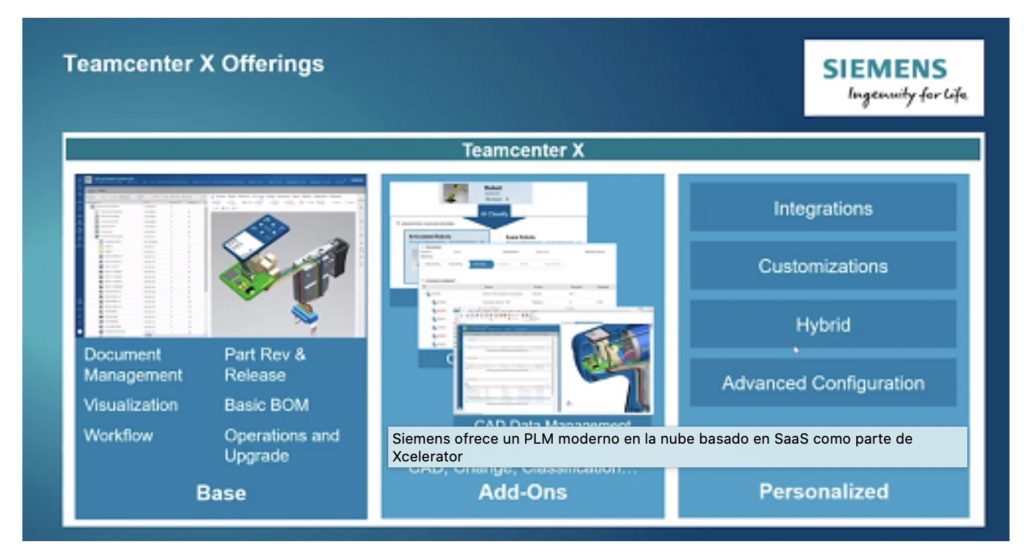
My yesterday post about Teamcenter X and SaaS PLM raised a significant number of comments online and offline. Many of you contacted me online and offline. To all my readers, the number of questions and opinions about SaaS caught me by surprise. I was happy to see Siemens joining SaaS PLM, I was very much interested to learn about what is behind Teamcenter X announcement and what is Teamcenter X architecture.
According to Siemens’s session, Teamcenter X is the world’s first modern SaaS PLM solution. Unfortunately, the session reply is not available at the moment I’m writing the article. I hope to have it available, to share more details.
What caught my special attention is the diversity of opinions about what SaaS is and the SaaS differentiators. Here are a few comments I captured.
1- SaaS is just another way to sell software
It is hard to disagree. Indeed SaaS is another way to sell software. But here is the thing, why such statements can be a bit misleading. When you sell something, you think about packaging. For physical products, it can be packaging on the shelves and for software products, it can be the way to package features and functions. Take a physical product (eg. Webcam). If you sell a product in the consumer market, the box is extremely important, because it will be the big thing, when this box will show up on the Apple Store shelf. But if you sell the same webcam to a business, the packaging can be less important. Business is buying 100s or more cameras and a nice box is not what this type of customer actually is looking for.
So, getting back to PLM, my hunch the same product must be packaged differently when it is sold as SaaS product vs on-premise product. I captured the image here. How different is TCX from a traditional TC is hard to say, but I want to know your opinion.

2- SaaS is a subscription business model
This is another popular way to describe SaaS- it is everything that is sold using subscriptions. While this definition has some strong legs, I wonder if the packaging is actually matters in this case. What if I’m selling the same CAD package box, but using subscription? Does it make a difference in how it packaged and how this package is delivered?
For the last few years, I’ve seen companies introduced subscriptions to their existing products (eg. Solid Edge). Using a centralized system for licensing and configuration setup, CAD companies allow you to keep the CAD system installed, but at the same time, block functionality if you don’t have an active subscription.
3- SaaS is hosted software
This variant is the most interesting. The hosting of software is not something new. PLM and other companies have been practicing hosting for more than a decade, experimented with different technologies and packaging.
The main differentiator in hosting is the responsibility of the software vendors to provide a service. Before, CAD or PLM vendor was only responsible for sending a package with CDs. Now it is not, a vendor’s responsibility is also to run servers, maintain updates, and support availability. This is a different thing. While you think about installing servers for tens or maybe hundreds of thousands and more servers and databases, you can appreciate some level of optimization for maintenance and cost. And this is how multi-tenancy is becoming important. Read more here.
What is my conclusion?
I think SaaS has many faces. It is another way to sell software, it is a subscription-based and it is more often than other (non-software) products requires to be hosted. Thinking about SaaS as packaging, I found that some elements of this packaging are becoming extremely important. A single definition of it is “unit economics”. The cost of a CD is practically zero. Which makes it really scalable when the vendor needs to sell it. You send a CD, the customer needs to buy a computer and use it. The same was with on-premise PLM. You sell it and a customer needs to figure out how to install and use it. However, in hosted software, the hosting package makes a difference. Because it will define how many servers and databases you need, how to install and maintain it, and how much it will cost. Therefore, my recommendation for PLM vendors was to learn why multi-tenancy and unit economics is one of the biggest differentiators SaaS PLM must focus on. And it is tightly connected to functions and features. Without both these things, SaaS PLM can be DOA.
Just my thoughts…
Best, Oleg
Disclaimer: I’m co-founder and CEO of OpenBOM developing cloud based bill of materials and inventory management tool for manufacturing companies, hardware startups, and supply chain. My opinion can be unintentionally biased.
The post PLM SaaS Debates appeared first on Beyond PLM (Product Lifecycle Management) Blog.



Be the first to post a comment.